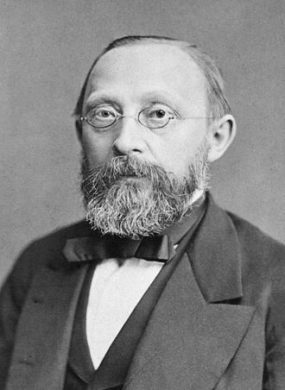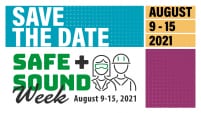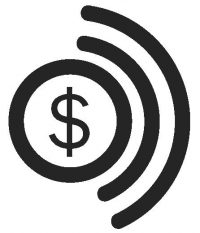eNews: Volume 19, Number 3 (July 2021)
Volume 19, Number 3 (July 2021)
From the Director’s Desk
John Howard, M.D. Director, NIOSH
Everything Old is New Again: Rediscovering a Social Approach to Work and Health Inequities
Increased levels of disease and poverty among workers during the Industrial Revolution led Rudolf Virchow and others to explore how social and economic conditions affected health, disease, and the practice of medicine [1]. The 50th anniversary of NIOSH comes at another inflection point in history when we are experiencing a fundamental reorganization of the world of work. Promoting a social approach to medicine that accounts for the association between work and health offers the occupational safety and health (OSH) community a timely opportunity to apply a new perspective to addressing the complex challenges of the “Fourth Industrial Revolution.”
OSH has historically been a mostly technical field concerned with finding and removing hazards found at the workplace [2]. Central to the field is the biomedical model of medicine, which focuses on naming a specific physical cause for illness or injury and eliminating it [3]. This approach has contributed to significant declines in illness and injury among workers over the past 50 years.
However, factors such as growing social inequality, restructuring of employer-employee relationships, and subcontracting practices that externalize risk highlight the need to account for the impact the wider social context has on work-related health outcomes [4]. These challenges lead us toward a biopsychosocial approach—viewing health within a social context—in OSH.
Central to a biopsychosocial approach is the idea that how we structure social relations, industries, and jobs affects the distribution of work-related benefits and risks. The influence a job, or lack thereof, has on health goes beyond physical, emotional, and social conditions at work. One’s job has a major effect over most other aspects of life that can affect an individual’s health, such as their income, social status, housing, economic security, and amount of free time. As a result, improving access to “good jobs” is an important way to address health inequities.
The NIOSH Occupational Health Equity program leads our efforts to promote research, outreach, and prevention activities that address avoidable differences in workplace injury and illness that are closely linked with social, economic, or environmental disadvantage. A primary goal of the program is to help integrate social approaches to occupational health into NIOSH initiatives.
For example, the Occupational Health Equity program is collaborating with research partners to include the domain of “work” in public health research and practice activities that address health inequities [5]. These efforts will help the OSH field adopt a biopsychosocial approach and gain a more holistic understanding of the complex associations between work and health. The growing demand for this approach, especially in the context of the COVID-19 pandemic, suggests that sometimes the best way to move forward is to look back.
References
- Brown TM, Fee E [2006]. Rudolf Carl Virchow: medical scientist, social reformer and role model. Am J Public Health 96:2104–2105.
- Peckham TK, Baker MG, Camp JE, Kaufman JD, Seixas NS [2017]. Creating a future for occupational health. Ann Work Expo Health 61(1):3–15.
- Engel GL [1977]. The need for a new medical model: a challenge for biomedicine. Science 196(4286):129–136.
- Flynn M [2018]. Im/migration, work, and health: anthropology and the occupational health of labor im/migrants. Anthropol Work Rev 39(2):116–123.
- Flynn MA, Wickramage K [2017]. Leveraging the domain of work to improve migrant health. Int J Environ Res Public Health 14(10):1248.
For the NIOSH 50th Anniversary, please enjoy this limited time series of “NIOSH Now” and “NIOSH Then” where we look back at research efforts inside & outside of NIOSH from the past 50 years.
NIOSH Now:
Work-related Deaths in Alaska Remain High
Since the 1980s, improvements in workplace safety have helped decrease the risk of death in the workplace. However, work-related deaths in Alaska remain three times higher than in the rest of the United States.
NIOSH investigators reviewed work-related deaths from 2004 to 2018 recorded in the Alaska Occupational Injury Surveillance System, which tracks workplace deaths and injuries. During the 15 years studied, 517 work-related deaths occurred, according to the research published in the American Journal of Industrial Medicine. Most of the deaths occurred among white men who worked in the commercial fishing industry. Their average age was 42 years old.
The leading cause of work-related death was water vehicle incidents, which accounted for 28 percent of the total number. At the same time, these deaths dropped from 67 in 2004–2008, to 35 in 2014–2018. Most of the deaths related to water vehicle incidents were from drowning. Aircraft incidents were the second-leading cause, accounting for slightly more than 20 percent of deaths. Most of the workers who died in aircraft incidents were pilots, followed by water transportation workers, and tour and travel guides. The third-leading cause was suicide, which accounted for nearly 9 percent of deaths, and the most common method was firearms. The number of suicides rose from 4 during 2004 to 2008, to 22 during 2014 to 2018.
Emerging risks for work-related death include homicide and unintentional overdoses. The number of homicides increased from 7 during 2004 to 2008, to 13 during 2014 to 2018. Most of the work-related homicides occurred among law enforcement officers, followed by managers, and motor vehicle operators. Most of the unintentional overdoses occurred among commercial fishing workers. These results can help inform and guide research and prevention efforts to protect Alaskan workers.
More information is available:
Study Showing More Injuries Among Temporary Workers Helped Change Law
In 2017, research published in the American Journal of Industrial Medicine showed that temporary workers were more likely to be injured than permanent workers and less likely to get safety and health training. Based in part on this research, Washington State recently passed a law requiring employers and staffing agencies to ensure that temporary workers, specifically in construction and manufacturing, receive this training.
While past studies showed that temporary work was associated with an increased number and severity of on-the-job injuries, few of them investigated which factors underlie these issues. In contrast, this study at the Washington State Department of Labor and Industries—a NIOSH-funded Occupational Safety and Health Surveillance Program—focused on temporary employment and specific injury risk factors. These risk factors included chemical, mechanical, noise, heat, and other hazard exposures; as well as work tenure, or length, age, industry, safety training, and supervision.
In their study, the Washington State surveillance program compared 43,502 state workers’ compensation claims for temporary and permanent workers in similar industries between 2011 and 2015. Researchers interviewed 460 workers about their injury risk factors. They matched groups of 194 temporary and 266 permanent workers by industry, tenure, and other demographics. Most of the workers were males with one year or less on the job, and more than half were between 25 and 44 years old.
Overall, workers’ compensation claims showed that temporary workers were injured, on average, twice as often as permanent workers. At the same time, temporary workers reported fewer hazard exposures than permanent workers but were less likely to get training on preventing them. These findings and others support the need for policies requiring temporary staffing agencies and employers to provide training and other safety protections, especially in higher-risk industries like construction and manufacturing, as the number of temporary workers increases.
More information is available:

Rudolf Virchow (1921); German physician considered the “founder of social medicine.” Credit Wikipedia
Director’s Desk
Research Rounds
- Work-related Deaths in Alaska Remain High
- Study Showing More Injuries Among Temporary Workers Helped Change Law
Highlights
- COVID-19 Update
- Prevent Heat-related Illnesses
- What’s Work Got to Do With It? New Podcast Features NIOSH Director on NIOSH @50
- Save the Date: Safe + Sound Week: August 9–15
- NIOSH Announces Free, Confidential Screenings in 2021 for Coal Miners
- Apply Now for Commercial Fishing Safety Research and Training Grants
- Learn About Effective Use of In-vehicle Monitoring Systems in New NIOSH Webpage
Monthly Features
John Howard, M.D., Director
Christina Spring, Editor in Chief
Managing Editor
Anne Blank
Section Editor
Anne Blank, Research Rounds
Kiana Harper, Highlights & Monthly Features
Contributing Editors
Sarah Mitchell
Emily Norton
Donjanea Williams
Copy Editor
Cheryl Hamilton
Technical Support
Steve Leonard, Technical Lead
Matt Osborne, Web Developer
To receive the NIOSH eNews email newsletter, enter your email address:
Highlights
COVID-19 Update
As part of NIOSH’s efforts to keep our stakeholders up to date on the CDC and NIOSH COVID-19 response, here is a summary of new information available.
- Making Masks for the Workplace
New information from NIOSH is available for manufacturers to produce Workplace Performance and Workplace Performance Plus masks. This new NIOSH criteria for workplace masks also meets the standard in the ASTM International Specification for Barrier Face Coverings, F3502-21. - Types of Masks
CDC recently updated its Types of Masks webpage to include information that identifies masks that meet a standard, including the ASTM Standard. - Vaccinating Migrant/Migratory and Seasonal Food and Agriculture Workers
CDC published a new webpage to help jurisdictions ensure that migrant and migratory seasonal food and agricultural workers are vaccinated. The webpage addresses the unique challenges and best practices for providing vaccines to these workers.

Prevent Heat-related Illnesses
The heat is on! Be prepared to protect yourself from heat-related illnesses! Check out the NIOSH Fast Fact tip sheet on the symptoms of heat-related illnesses and preventative steps you can take to avoid them. For more information on heat stress, along with resources to share with your employees, see the NIOSH Heat Stress webpage.
What’s Work Got to Do With It? New Podcast Features NIOSH Director on NIOSH @50
For the NIOSH 50th anniversary, the Oregon Healthy Workforce Center recently released a podcast with NIOSH Director Dr. John Howard, reflecting back on the history of the institute and its important work and accomplishments. This podcast is a part of the Oregon Healthy Workforce Center’s (OHWC) What’s Work Got To Do With It? podcast series, which is geared toward highlighting the ways in which work can affect our overall safety, health, and wellbeing.

Save the Date: Safe + Sound Week: August 9–15
Once again, NIOSH, OSHA, and their partners are sponsoring Safe + Sound Week. Safe + Sound Week is a nationwide event to celebrate the successes of businesses that have implemented safety and health programs in the workplace. Every August, these businesses are invited to celebrate their safety successes and efforts to be #SafeAndSoundAtWork. Registration opens July 7!
NIOSH Announces Free, Confidential Screenings in 2021 for Coal Miners
From September 9–24, NIOSH will offer a series of free, confidential health screenings to coal miners as part of the Coal Workers’ Health Surveillance Program in parts of southern West Virginia. The screenings are for the early detection of coal workers’ pneumoconiosis, also known as black lung, a serious but preventable occupational lung disease in coal miners caused by breathing respirable coal mine dust. The NIOSH mobile health unit is considered a “healthcare setting,” so COVID-19 prevention strategies will be followed. Find more information on the NIOSH Press Releases and Updates webpage.

Apply Now for Commercial Fishing Safety Research and Training Grants
Three million dollars in funding is now available through a partnership between NIOSH and the U.S. Coast Guard to support both research on improving the occupational safety of workers in the commercial fishing industry and critical training for this occupation. These fishing safety research cooperative agreements (RFA-OH-20-002) and training project grants (RFA-OH-20-003) will provide 75% of an organization’s costs with a maximum of $975 thousand per grant over a three-year period in 2022. More information is available in the following receipt date notices: New Receipt Date and Change in Cost Match Requirement for Commercial Fishing Occupational Safety Research Cooperative Agreement (U01) and New Receipt Date and Change in Cost Match Requirement for Commercial Fishing Occupational Safety Training Project Grants (T03). The deadline to apply is August 27.
Learn About Effective Use of In-vehicle Monitoring Systems in New NIOSH Webpage
NIOSH recently released a webpage about how in-vehicle monitoring systems (IVMS) can be effective tools for employers to reduce risky driving behaviors and improve motor vehicle safety when paired with video-based supervisory coaching of drivers. Find more information on the IVMS webpage.
New Communication Products & Reports
Fire Fighter Fatality Investigation and Prevention Program Report
Program Performance One-Pagers (PPOP)
- Center for Work and Fatigue Research
- Wholesale and Retail Trade Program
- Oil and Gas Extraction Program
Other Publications
NIOSH Science Blog
- Mission Possible: Measuring Worker Well-Being
- Work and Well-being: The Changing Face of Occupational Safety and Health
- An Ancient Hazard in a 21st Century Workplace: The Power of Partnerships and Collaboration Investigating Respirable Crystalline Silica in Hydraulic Fracturing
- Getting the Word Out: NIOSH Publications and Products
- Reducing Occupational Chronic Disease: CRC Cross Sector Program
- World Trade Center Health Program: First Decade of Research
- Getting Creative
Federal Register Notices
Board of Scientific Counselors, National Institute for Occupational Safety and Health (BSC, NIOSH), National Firefighter Registry Subcommittee
This notice was posted on June 4. Comments must be received by August 6. The meeting will be held on August 13, from 1–4 p.m. (EDT).
Final Current Intelligence Bulletin 70: Health Effects of Occupational Exposure to Silver Nanomaterial
This notice was posted on June 3.
Proposed Data Collection Submitted for Public Comment and Recommendations: A Baseline of Injury and Psychosocial Stress for Applied Behavior Analysis Workers
The notice was posted on May 7. Comments must be received by July 6.
Proposed Data Collection Submitted for Public Comment and Recommendations: Generic Clearance for the Collection of Qualitative Feedback on Agency Service Delivery
The notice was posted on May 7. Comments must be received by July 6.
Proposed Data Collection Submitted for Public Comment and Recommendations: Nurse Fatigue-Mitigation Education: Does It Change Nurse Sleep Behavior?
The notice was posted on May 14. Comments must be received by July 13.
Needs and Challenges in Personal Protective Equipment (PPE) Use for Underserved User Populations
The notice was posted on June 24. Comments must be received by August 23.
NORA
Celebrating 25 years of NORA
Three recent NIOSH Science Blogs highlight NORA partnership efforts since it was first created in 1996:
- Celebrating 25 Years of NORA reflects on three decades of national research priorities and the accomplishments of NORA councils.
- An Ancient Hazard in a 21st Century Workplace describes a collaboration through the Oil and Gas Extraction Council to investigate res respirable crystalline silica in hydraulic fracturing.
- Reducing Occupational Chronic Disease describes the NIOSH Cancer, Reproductive, Cardiovascular and Other Chronic Disease Prevention Program (CRC) and its role as stewards of the NORA CRC Council.
News from Our Partners
Partners and the NIOSH 50th
Check out new information from our partners who are recognizing the NIOSH 50th anniversary, along with their successes and accomplishments from partnering with our institute. You can find this information on the NIOSH 50th anniversary webpage.
New Publication From New York and New Jersey Education and Research Center
A new publication from the New York and New Jersey Education and Research Center (ERC) focuses on young adult cancer survivors and their perspectives on their work-related goals. This study is significant because this group often has major challenges related to work, including disruptions to education and employment milestones. This research is part of a larger project examining the influence of work-related and individual factors on the quality of life of young adults who have completed treatment for hematologic cancer. The New York and New Jersey ERC is 1 of 18 NIOSH-funded centers that addresses the U.S. occupational safety and health (OSH) burden by providing interdisciplinary training for the next generation of OSH practitioners and researchers.
WVU Moves Industrial Hygiene Program to School of Public Health
West Virginia University’s (WVU) Appalachian Training Program in Occupational Health and Safety, a NIOSH-funded Training Project Grant, recently moved its Master of Science in Industrial Hygiene to the university’s School of Public Health. The program, previously located in the Benjamin M. Statler College of Engineering and Mineral Resources, is designed for students with undergraduate training in the areas of engineering, chemistry, biology, medical sciences, animal sciences or the physical sciences who have an interest in occupational and environmental health and safety.
New Journal From Board of Certified Safety Professionals
The Board of Certified Safety Professionals has launched a new peer-reviewed journal, Shift: Global EHS Research to Practice. The journal will serve as a conduit to cutting-edge research and discovery supporting the transformation of original research and innovation to practical application and best practices in environment, health, and safety. It will have two issues per year and will work with authors on supporting best practices documents to complement their scientific articles.
Call for Proposals:
- National Occupational Injury Research Symposium: The deadline to submit abstracts and proposals for sessions is October 1.
Conferences, Meetings, Webinars, & Events
This page provides a list of publicly available occupational safety and health-related conferences, meetings, webinars, and events sponsored by NIOSH as well as other government agencies, and nongovernment agencies, such as universities, professional societies, and organizations.
